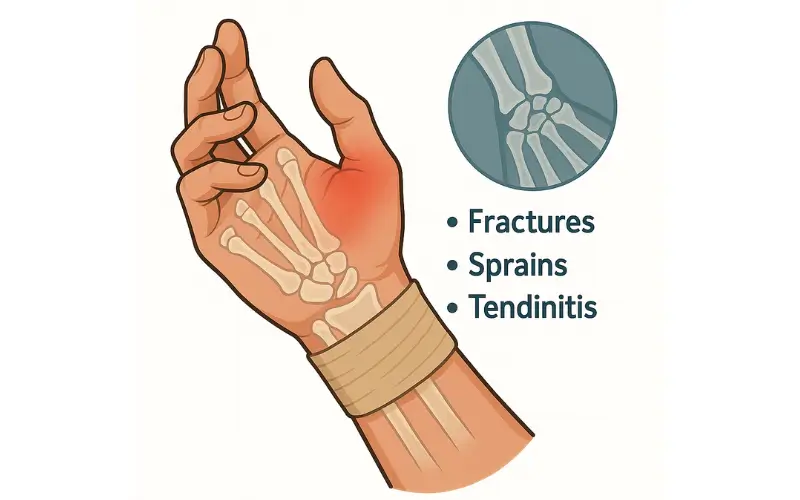When it comes to maintaining our daily functions, the health of our hands and wrists is absolutely vital. Whether you’re typing, cooking, or simply shaking hands, these parts of the body are involved in countless motions every day. Sometimes injuries occur that impair their function, and in such cases, consulting experienced Hand Surgeons is crucial. Understanding the common causes of hand and wrist injuries can help you recognize when professional care, including surgery, may be necessary to restore movement and relieve pain.
Learning the General Causes of Hand and Wrist Injury
Injuries in the hands and wrists may be caused by a significant number of factors, including sudden traumatic situations and constant wear and tear. A fracture is one of the most common forms of injury. Bones in the hand or the wrist could become fractured as a result of falls, sporting injuries, or accidents, and could significantly restrict movement and cause severe pain. Often, fractures require medical attention to ensure the bones are correctly healed, and surgery is the best alternative to restore the bone to its proper position using pins, plates, or screws.
Ligament damage is also typical. Ligaments are the connectors of bones, and they give stability to joints. These ligaments can be stretched or torn by sudden twists or impacts, which cause sprains. Traumatic ligament injuries may fail to respond to non-surgical treatment, particularly those that lead to instability of joints or with chronic pain. This is most evident on the wrist, where intricate ligament formation is required to facilitate easy movements in the hands.
Injuries to the tendons are also a common injury of the hand and the wrist. Tendons connect bones and muscles, allowing them to move. Repetitive motions or overuse are frequently a contributing cause of tendonitis, or inflammation of the tendons, and can lead to chronic conditions without proper treatment. The rupture of tendons in other instances is abrupt, e.g., when tendons break during a vigorous activity. In severe cases, surgery may be required to repair or reconstruct damaged tendons, allowing for full functionality to return.
Another type of conditions that affect the hands and wrists is called repetitive strain injury (RSI). Such injuries are acquired over time through frequent movements, such as typing, working with instruments, or playing musical instruments. RSIs may lead to the development of pain, swelling, and a decrease in dexterity. Even though RSIs do not always require surgery, surgeries might be the only solution to the problem in cases where conservative measures are ineffective and the condition is persistent.
The Involvement of Surgery in the Treatment of Hand and Wrist Injury
Hand and wrist surgery is highly specialized and designed to correct the anatomy and function of these complex structures. In case of displaced or unstable fractures, surgery provides correct positioning and fixation. Not only does this aid in bones healing properly, but it also lowers the chances of developing long-term complications, including arthritis or chronic pain.
In cases of ligament injuries, surgery may be used to repair or reconstruct the ligament, thereby enhancing the joint’s stability. The additional techniques include the methods of skilled surgeons who can reattach torn ligaments or substitute them with grafts. This process could significantly enhance the strength of the hands and reduce the risk of additional damage, allowing patients to resume their everyday activities without any doubts.
Surgery on tendons aims to repair the tear or rupture and remove the inflamed tissue in cases of severe tendonitis. Depending on the injury, surgeons may reconnect tendons to the bones or graft to reconstruct damaged tendons. In such cases, physical therapy following surgery is essential to restore strength and flexibility.
To sum it up, injuries of the hand and wrist may have many different origins, such as fractures, damage to ligaments and tendons, nerve compression, and repetitive stress. It is a good idea to know the indicators that require medical attention to protect the hand. Surgery done under the care of professional hand surgeons can be an effective option where non-surgical treatment is inadequate. Most people, through management, diagnosis, treatment, and rehabilitation, can regain standard functionality of their hands and wrists, leading to a better quality of life. If you experience constant pain or numbness in your hand or wrist, or have restricted movement, it is recommended that you visit a specialist as soon as possible.




